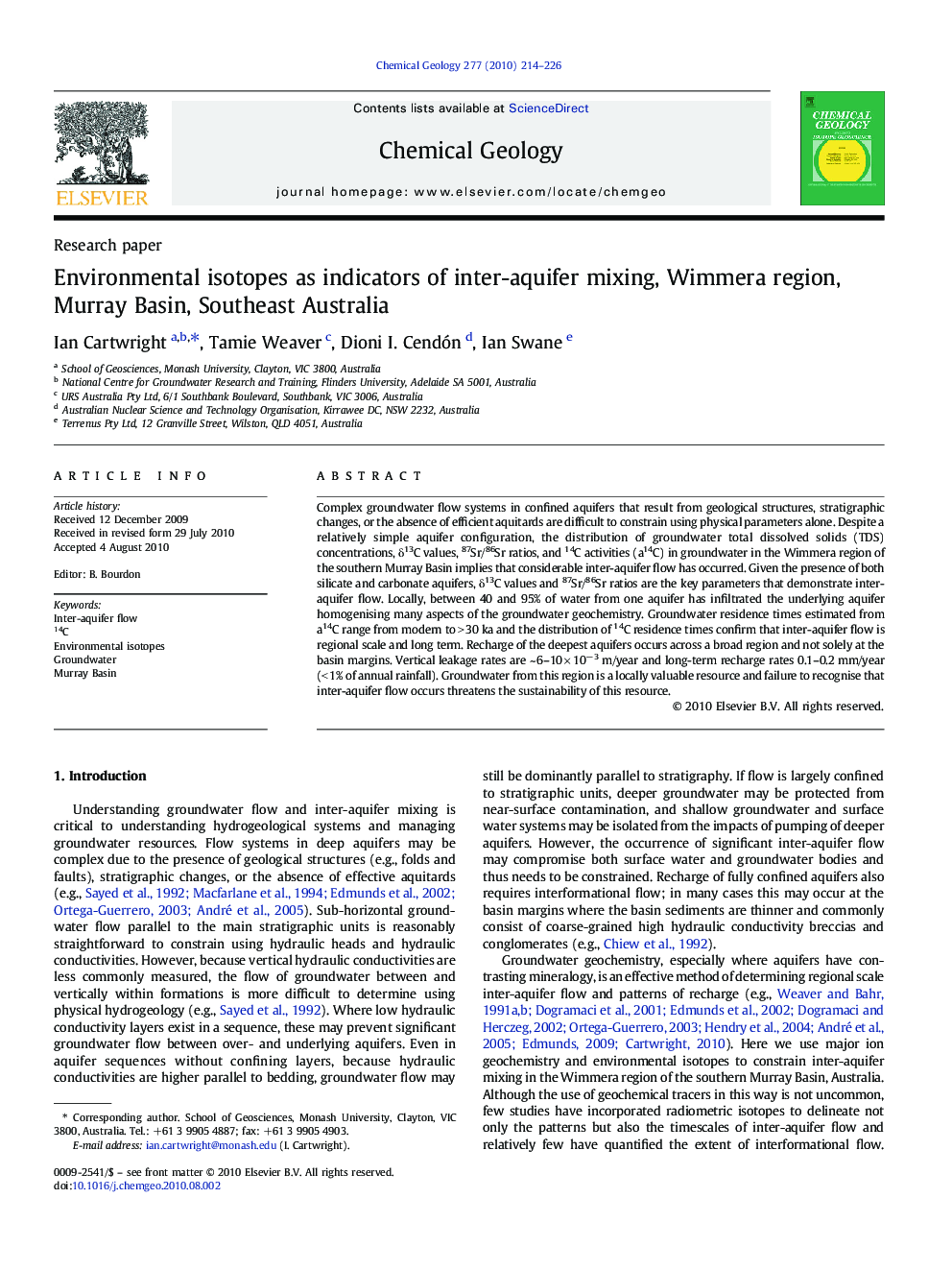| Article ID | Journal | Published Year | Pages | File Type |
|---|---|---|---|---|
| 4699904 | Chemical Geology | 2010 | 13 Pages |
Complex groundwater flow systems in confined aquifers that result from geological structures, stratigraphic changes, or the absence of efficient aquitards are difficult to constrain using physical parameters alone. Despite a relatively simple aquifer configuration, the distribution of groundwater total dissolved solids (TDS) concentrations, δ13C values, 87Sr/86Sr ratios, and 14C activities (a14C) in groundwater in the Wimmera region of the southern Murray Basin implies that considerable inter-aquifer flow has occurred. Given the presence of both silicate and carbonate aquifers, δ13C values and 87Sr/86Sr ratios are the key parameters that demonstrate inter-aquifer flow. Locally, between 40 and 95% of water from one aquifer has infiltrated the underlying aquifer homogenising many aspects of the groundwater geochemistry. Groundwater residence times estimated from a14C range from modern to > 30 ka and the distribution of 14C residence times confirm that inter-aquifer flow is regional scale and long term. Recharge of the deepest aquifers occurs across a broad region and not solely at the basin margins. Vertical leakage rates are ~ 6–10 × 10−3 m/year and long-term recharge rates 0.1–0.2 mm/year (< 1% of annual rainfall). Groundwater from this region is a locally valuable resource and failure to recognise that inter-aquifer flow occurs threatens the sustainability of this resource.
Research Highlights► Southern Murray Basin groundwater shows inter-aquifer mixing. ► Sr and C isotopes imply mixing ratios are up to 90%. ► Additional carbonate dissolution modifies C and Sr isotopes. ► C-14 dating shows that mixing is regional scale and long-term. ► Vertical flow is driven by high K in deeper units.
